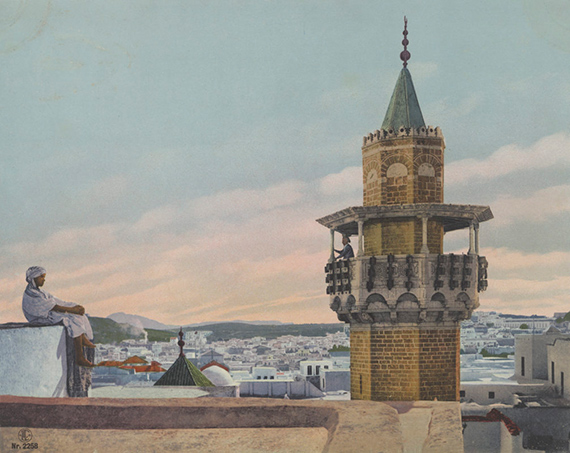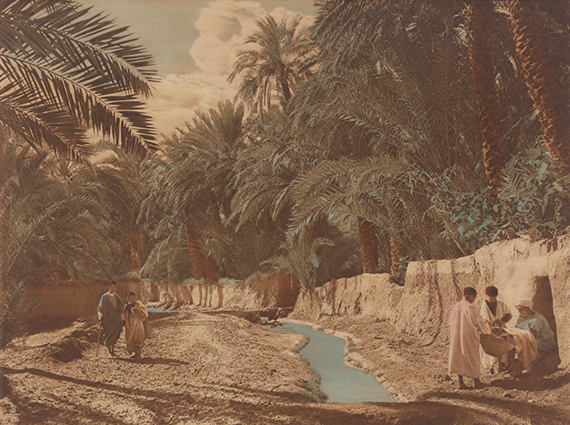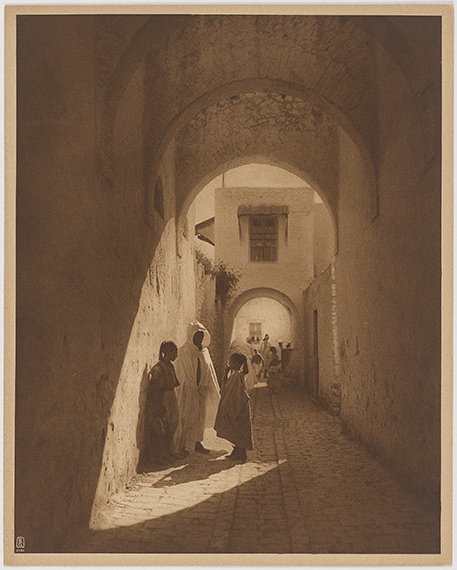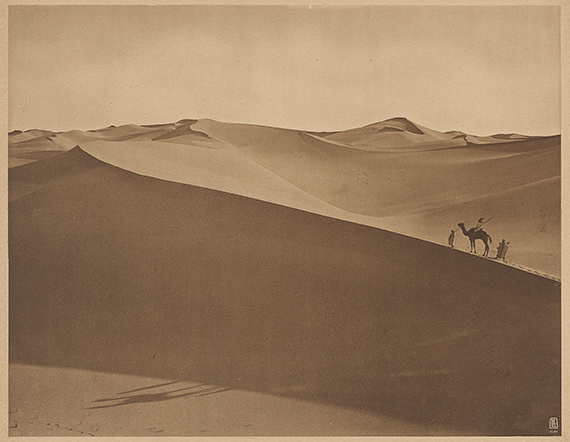
Lehnert & Landrock »
A Colonial Archive
Exhibition: 31 Oct 2025 – 1 Feb 2026
Thu 30 Oct 18:00

PHOTO ELYSEE
Place de la Gare 17
1003 Lausanne
+41(0)21-3169911
Wed-Mon 10-18, Thu 10-20

Lehnert & Landrock
Revisiting A Colonial Archive
31.10.2025 – 01.02.2026
Opening: Thursday, October 30, 2025 at 6 pm
Photo Elysée offers a critical reinterpretation of the photographic archives of the Lehnert & Landrock studio, which have been part of the museum's collection since 1985. Active in North Africa in the early 20th century, Rudolf Franz Lehnert (1878–1948) and Ernst Heinrich Landrock (1878–1966) constructed and disseminated an iconography of the Orient intended for a European audience, deeply marked by the colonial context of their time.
The original archives are exhibited alongside contemporary works by Nouf Aljowaysir and Gloria Oyarzabal, which explore the history and legacy of colonial representations.
In 1985, the museum added the archives of the Lehnert & Landrock photography studio to its collection. Founded by Rudolf Franz Lehnert (1878-1948) and Ernst Heinrich Landrock (1878-1966), the studio was active in Tunis from 1904 to 1914, then in Cairo from 1924 onwards. It specialized in producing iconography of the Orient, which was widely distributed in Europe through photographs and postcards. The duo parted ways in 1930, and Landrock, then his heirs, continued to commercially exploit the images throughout the 20th century.
Today, Photo Elysée is questioning its role as a mediator of images by taking a critical and introspective look at the objects it preserves. To this end, it is presenting the original objects from the Lehnert & Landrock collection to the public for the first time. In collaboration with a research committee, the museum proposes to study the aesthetic and political dimensions of this corpus in the context of colonial enterprises.
To open up the discussion to other perspectives, Photo Elysée has invited artist Gloria Oyarzabal to explore these archives. Her contemporary perspective questions the way museums today approach collections related to colonial history. Her work enters into dialogue with that of Saudi artist Nouf Aljowaysir, who is interested in how artificial intelligence prolongs and reinforces stereotypes associated with the representation of the Orient.

Rudolf Lehnert and Ernst Landrock met in Switzerland in 1903. Originally from Bohemia and Saxony respectively, they shared a keen interest in the Orient, a region fantasized about and constructed by the European imagination, relayed in particular through literature, painting, fashion, and photography.
In 1904, they opened their first photography studio in Tunis, then under French protectorate. Lehnert took photographs in Tunisia, Algeria, Egypt, and Palestine, while Landrock managed the studio. Their success was largely based on the production of postcards, which were highly prized and widely distributed at the time.
The adventure was interrupted in 1914 by the First World War. In 1920, they founded the Orient Kunst Verlag company in Leipzig, then opened a new studio in Cairo in 1924, in a territory under British occupation. After their separation in 1930, Landrock continued the commercial exploitation of these images, first alone, and later together with his heirs.
The studio produced thousands of photographs of landscapes and idealized figures, dunes, oases, harems, and odalisques, which forged a stereotypical vision of the Orient. A Lehnert & Landrock bookstore still exists in Cairo, at its original address.
In 1985, Ernst Landrock's descendants deposited the studio's archives at Photo Elysée, which is responsible for their conservation.


